Hatching Growth #8: How We Doubled Down on YouTube Summary with Programmatic SEO
Scaling organic traffic, boosting domain authority, and shaping LLM SEO before it was a trend.
Glasp’s note: This is Hatching Growth, a series of articles about how Glasp organically reached millions of users. In this series, we’ll highlight some that worked and some that didn’t, and the lessons we learned along the way. While we prefer not to use the term "user," please note that we’ll use it here for convenience 🙇♂️
If you want to reread or highlight this newsletter, save it to Glasp.
Recap: #1–#7 in one glance
Cloudflare’s AI Crawl Control data shows the scale of requests driven by Programmatic SEO.
Introduction
In the last two episodes, we shared two Next 1 Million Projects we worked on after launching YouTube Summary. This time, we’ll talk about how we doubled down on the YouTube Summary.
When we launched the first YouTube Summary in late 2022, we unintentionally created a new category. As novelty faded and copycats appeared, we had to both defend what we’d built and expand the market—on a near-zero budget and without monetizing. That constraint pushed us to a two-step playbook: first, media reach to raise awareness and Domain Authority (DA), then programmatic SEO to compound visibility across evergreen, learning-focused topics.
We’re sharing this now because many founders ask how we reached millions of users organically and how to think about LLM SEO vs. human SEO in practice. This post walks through our pipeline, constraints, and results—including why Search Console showed modest short-term impact while Cloudflare revealed massive AI crawler activity (a leading indicator for LLM SEO).
If you want to try the approach yourself, there’s a tutorial at the end showing how to turn a YouTube video into Q&A-style content using YouTube Summary.
Context: Expanding the Market We Created
In late 2022, we built the world’s first YouTube Summary. It didn’t just become a feature—it created a whole new category.
By early 2023, we knew copycats would follow. But rather than just defend our position, we wanted to double down:
Expand the total addressable market (TAM) for YouTube Summary
Strengthen our leadership in the category we created
At first, our strategy was simple: media reach.
When your product is newsworthy and appealing to the media, outlets are often willing to feature it if you just reach out. We leaned into this, continuously securing coverage to expand awareness.
This choice wasn’t just strategic—it was also circumstantial. At the time, our runway was short, and we had almost no budget for marketing. As we shared in Hatching Growth #4, we weren’t monetizing yet, so affiliate deals or influencer collaborations weren’t viable paths. Media reach was one of the few levers available to us, and it worked. One highlight was a dedicated interview in Forbes, which gave Glasp a major credibility boost.
In fact, Glasp chose not to monetize for quite some time, and we deliberately spent zero budget on ads or paid marketing. Instead, we grew organically—reaching millions of users purely through product value, word of mouth, and strategic media coverage.
But as YouTube Summary began to lose its “novelty effect,” we needed a scalable way to keep compounding visibility. That’s when we transitioned to Programmatic SEO, systematically transforming YouTube transcripts into articles that Google could index and rank. This shift enabled us to capture long-tail search demand, expand organic reach, and solidify YouTube Summary as the primary entry point for millions of learners worldwide.
(We’ll share more about our post-YouTube summary media reach strategy in a future Hatching Growth episode. And while we haven’t yet covered fundraising in this series, it might be worth exploring at some point, since Hatching Growth is aimed at early founders building global consumer products.)
Why Timing Mattered
We felt that the AI boom would follow the classic “Chasm” adoption curve (Crossing the Chasm): starting with innovators, and only reaching the early majority 2–3 years later. We knew this not just from intuition, but from past patterns we had read about—for example, during the App Store era, where independent developers led the way and larger companies entered only years afterward.
From an SEO perspective, we also knew that even if AI could generate content instantly, the results would only appear months later. So we needed to invest early—plant seeds before others realized there was a harvest.
At the same time, our domain authority (DA) wasn’t nearly as strong as it is today. We assumed that even if we produced large volumes of content, much of it wouldn’t be indexed right away. That’s why our initial media reach strategy was important: as coverage compounded and DA improved, we believed our YouTube-based articles would eventually be indexed more easily and surface higher in search results.
How It Worked
Identify channels producing evergreen, learning-focused content that people would likely consume via YouTube Summary.
Fetch every video ID from those channels.
Gather video info (views, description, publish date, etc).
Filter only the videos that meet our conditions.
Send those videos to GPT-3.5 and generate articles.
We also experimented with Q&A-style content.
At the time, we were tracking Quora’s moves closely—especially when Quora announced Poe (Platform for Open Exploration) on December 21, 2022. Poe was initially invite-only and iOS-only, but even in that early form, we could see Quora doubling down on its strongest asset: Q&A. (TechCrunch) By the time Poe opened to the public on February 4, 2023, and rolled out a browser version on March 4, 2023, it was clear the market was shifting toward conversational, question-driven formats. (NeoReach)
In parallel, our own experience using ChatGPT gave us another insight: most user prompts naturally fall into either a question or a command. If that’s the case, then when LLMs generate or retrieve content, Q&A-structured material should have an inherent advantage.
This combination of external signals (Quora/Poe) and internal observations (ChatGPT usage patterns) led us to a hypothesis: Q&A-style content would be more likely to get surfaced by both humans and LLMs.
So when generating from YouTube transcripts, we deliberately embedded Q&A answers. Later, when Q&A schema and structured data became critical for LLM SEO, this intuition proved right—and it reassured us that our early analysis hadn’t been off track.
(By the way, we also interviewed Metehan, an expert on AEO and LLM SEO, on Glasp Talk. If you’re interested in going deeper into this topic, you can check out that conversation.)
Considerations at the Time
Uncertainty with Google: We didn’t know if AI-generated content would be indexed or penalized. Worst case, our domain could take a hit.
Quota management: GPT API access was still limited. We had to tune CloudRun Jobs and throttle output so we didn’t hit limits.
Strategic hedging: If Google changed its stance, we were ready to shut the project down entirely.
Copyright concerns: This was always a sensitive issue. To minimize risk:
We never used or republished full transcripts as-is.
We always displayed the original YouTube source clearly.
We transformed transcripts into summaries and Q&A formats, making the transformative use obvious.
After Launch
Quality: With GPT-3.5, content quality wasn’t great, but it was “good enough” to be indexed.
Learnings: When the industry conversation around LLM SEO started to gain traction, we realized we already had Q&A data in place. So we updated our pipeline to include Q&A structured data (JSON-LD) directly into the script. In practice, there was a noticeable lag between the initial content generation and when we actually implemented JSON-LD, but our early decision to embed Q&A paid off once we caught up.
Competition: As with YouTube Summary, copycats popped up quickly.
Sitemap integration: Eventually, we added auto-generated articles into our sitemap for indexing efficiency.
Multi-language support: We extended to languages beyond English.
Results
Traffic: Cloudflare logs showed huge traffic from AI bots. At one point, we saw over 2M+ requests in a single week coming just from AI crawlers. While this traffic included requests across all of Glasp, a closer look at what the AI crawlers were fetching showed that a large share of it was directed at the YouTube-generated articles.
Search Console:
YouTube: 14.7K clicks / 2.22M impressions (last 28 days)
Media pickup: Without any promotion, articles were cited by outlets like Wikipedia and Big Think.
Learnings
Programmatic SEO is efficient—lots of leverage for little manual effort.
Quality vs. Speed trade-off: At the time, content generated with GPT-3.5 wasn’t very high quality. Still, we prioritized speed and scale, knowing that SEO compounds over time. Today, with more advanced models, far better content can be generated with less effort, and we’re actively thinking about how to adapt our approach.
CTR reflects content limits: As the Search Console screenshot shows, impressions were high, but clicks were relatively low. We see this as evidence of the limits of GPT-3.5–era content quality, reinforcing the need to balance scale with depth.
Human SEO vs. LLM SEO: Search Console highlighted that human-facing SEO needed improvement, but Cloudflare logs showed enormous AI crawler activity, evidence that our content was already being surfaced in the LLM ecosystem.
Q&A formats are powerful: both for humans (engagement) and for LLMs (retrievability).
Format conversion (text ↔︎ audio ↔︎ video) remains a fertile space for discovery.
Tech Stacks
Language: Python
Infrastructure: CloudRun Jobs, Firestore
LLM: GPT-3.5 via API
Closing Thoughts
When you create a new market, defending your position isn’t enough—you also have to expand it. Media reach gave us an early lift when budgets were tight, and programmatic SEO helped us sustain growth once novelty wore off.
Looking back, three things made the biggest difference:
Betting early, knowing results would only show months later.
Recognizing the enduring power of Q&A formats, which later became central to LLM SEO.
Accepting quality limits of GPT-3.5 while prioritizing speed—then evolving as models improved.
Together, these reinforced YouTube Summary’s position as the entry point to a growing market.
In the next episode, we’ll look at how these experiments shaped our core strategy—what we doubled down on, what we sunset, and how we built a stronger foundation for long-term growth.
Tutorial: How to Create Your Own Q&A Content
If you’d like to try creating Q&A-style content yourself, we put together a step-by-step tutorial showing how to use Glasp’s YouTube Summary to easily turn a YouTube video into a Q&A-style article.
👉 How to Create a Q&A-Style Article from a YouTube Video with YouTube Summary
And as a bonus: the same method also works with audio files, so you can generate Q&A articles not just from YouTube, but from podcasts or recordings as well.
What’s next
In the next episode, we’ll look into other experiments that followed YouTube Summary’s launch—what we doubled down on, what we sunset, and how we folded those learnings back into the core.
If you have any thoughts or feedback, or anything you want us to share, please let us know in the comments 🙏
Partner with Glasp
We currently offer newsletter sponsorships. If you have a product, event, or service you’d like to share with our community of learning enthusiasts, sponsor an edition of our newsletter to reach engaged readers.
We value your feedback
We’d love to hear your thoughts and invite you to our short survey.



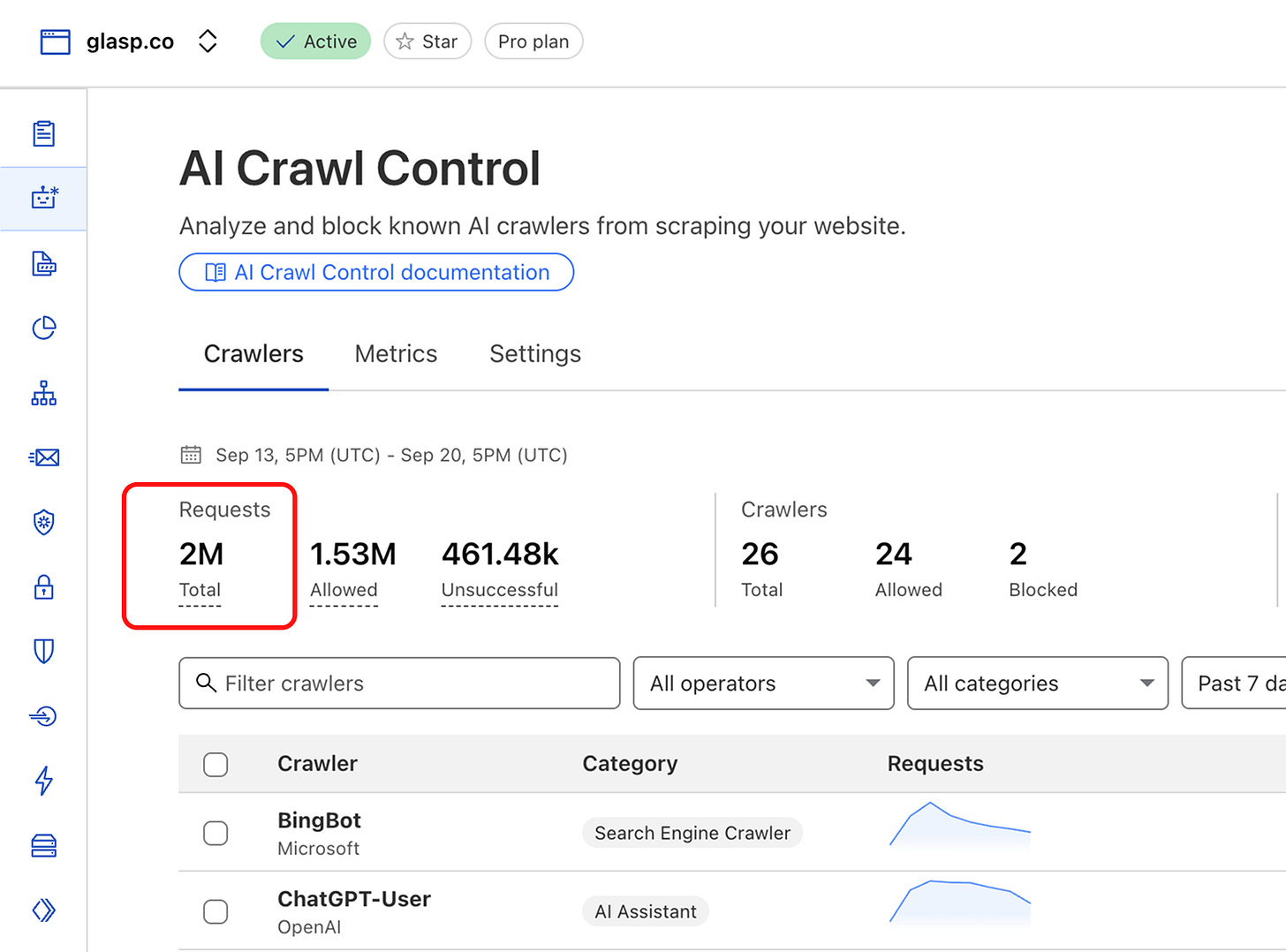
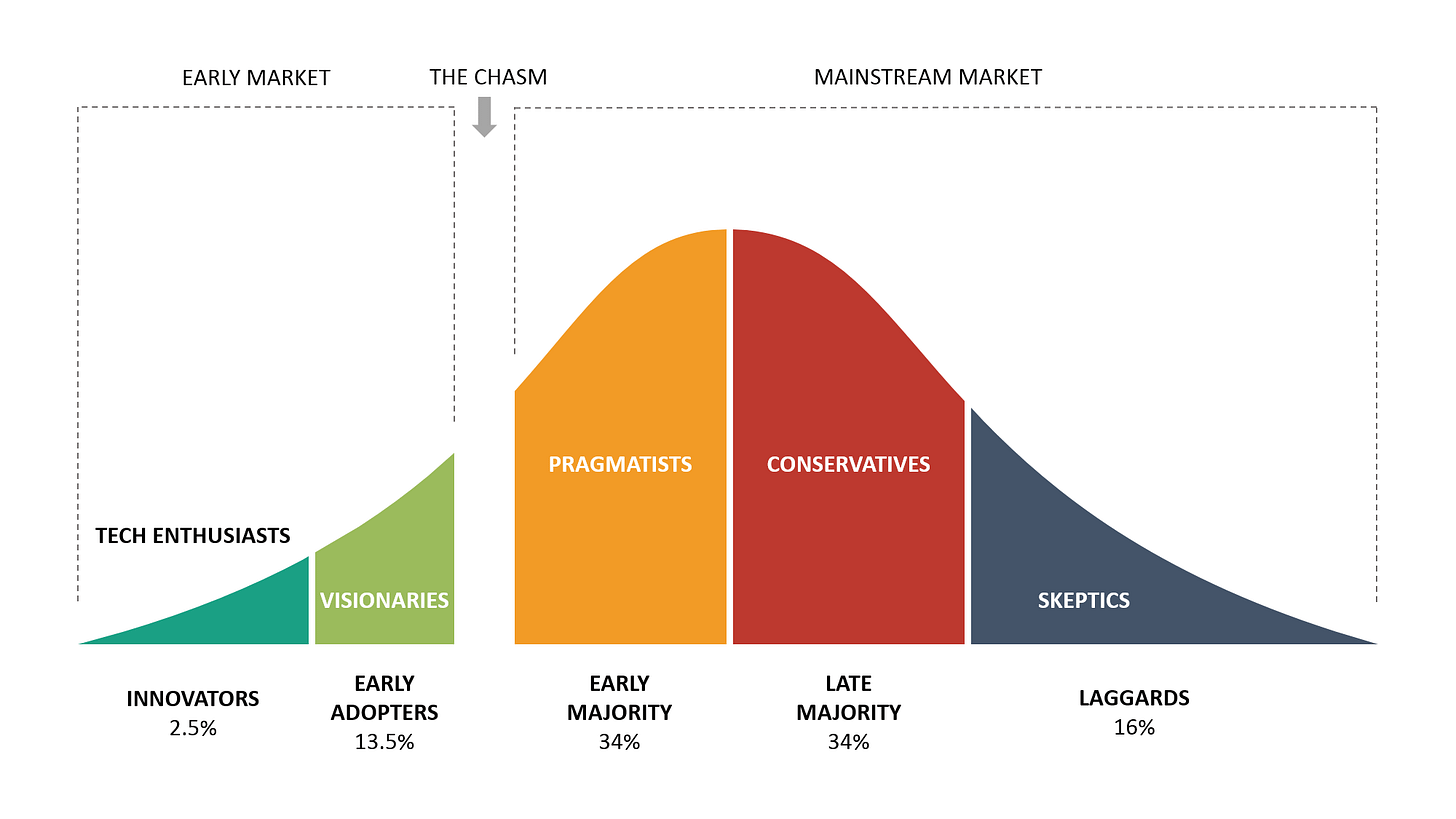
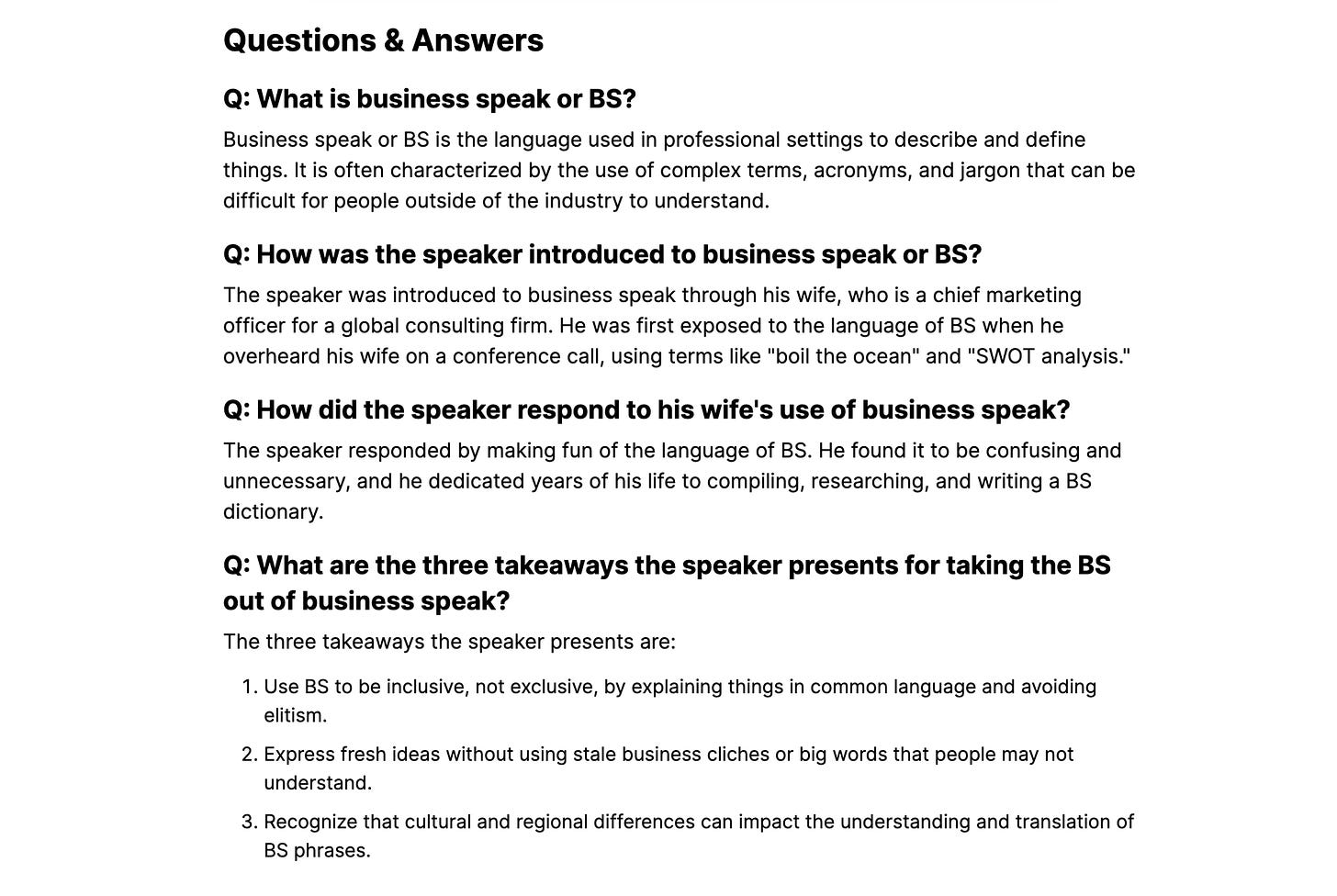
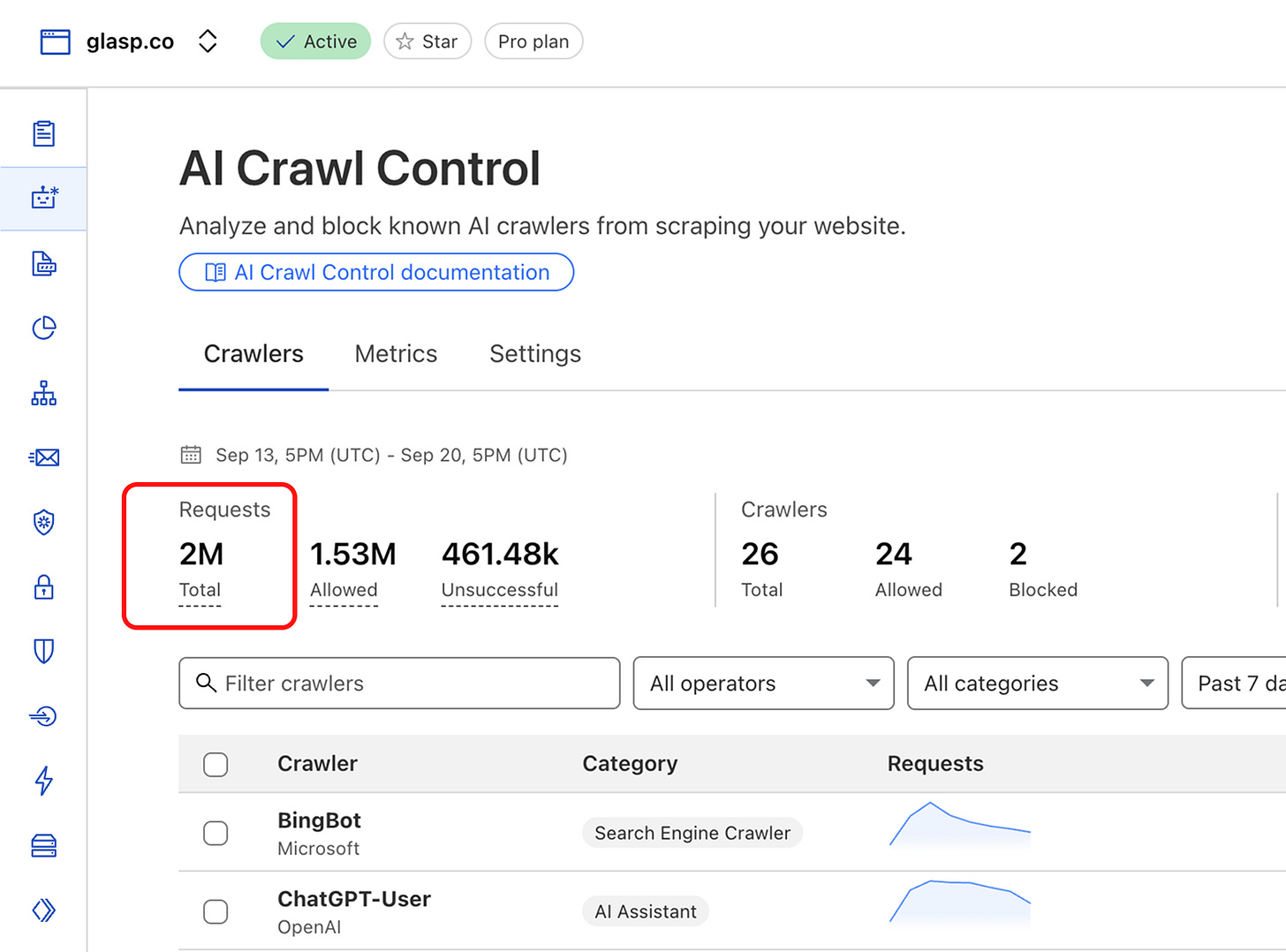
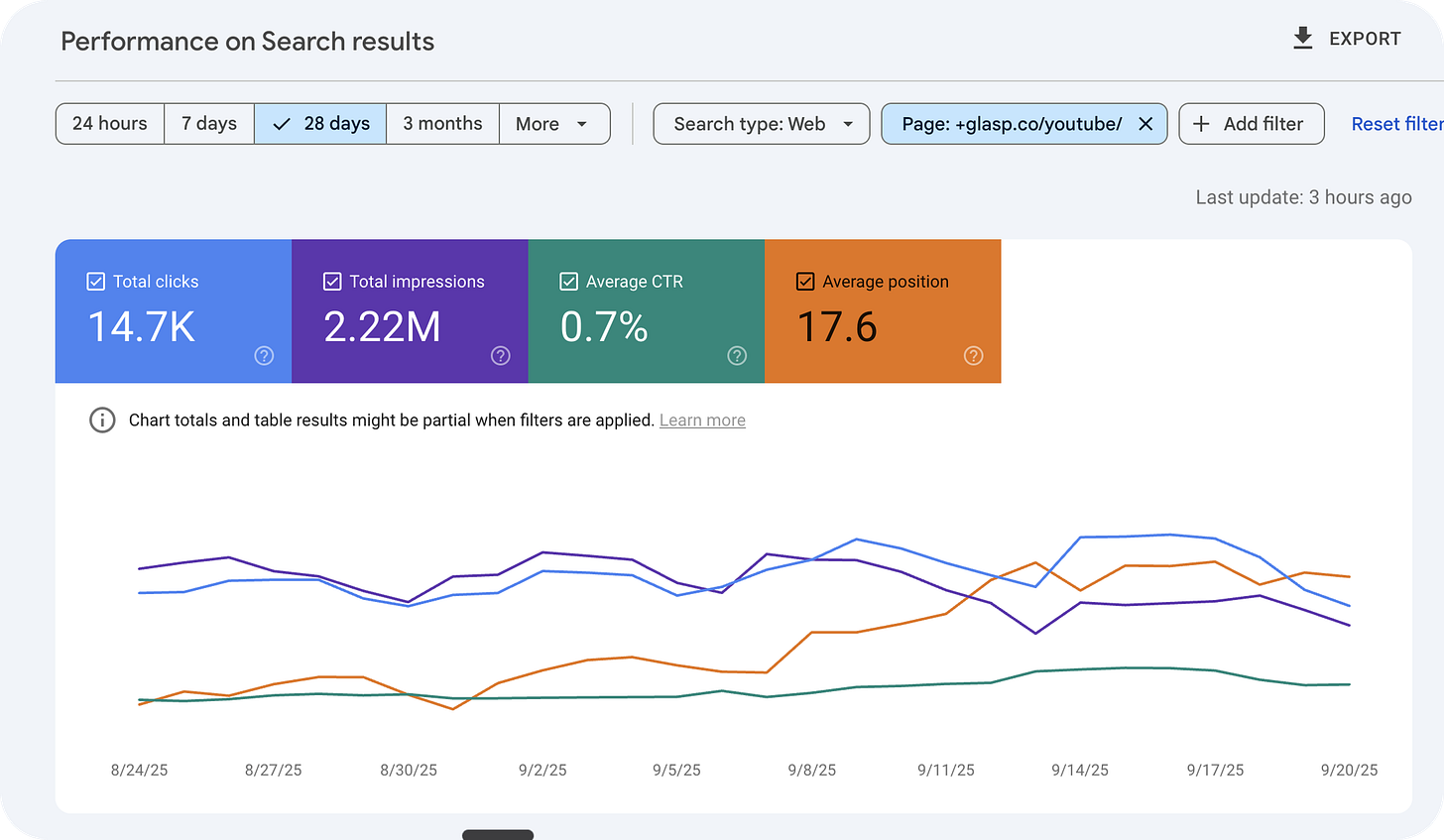
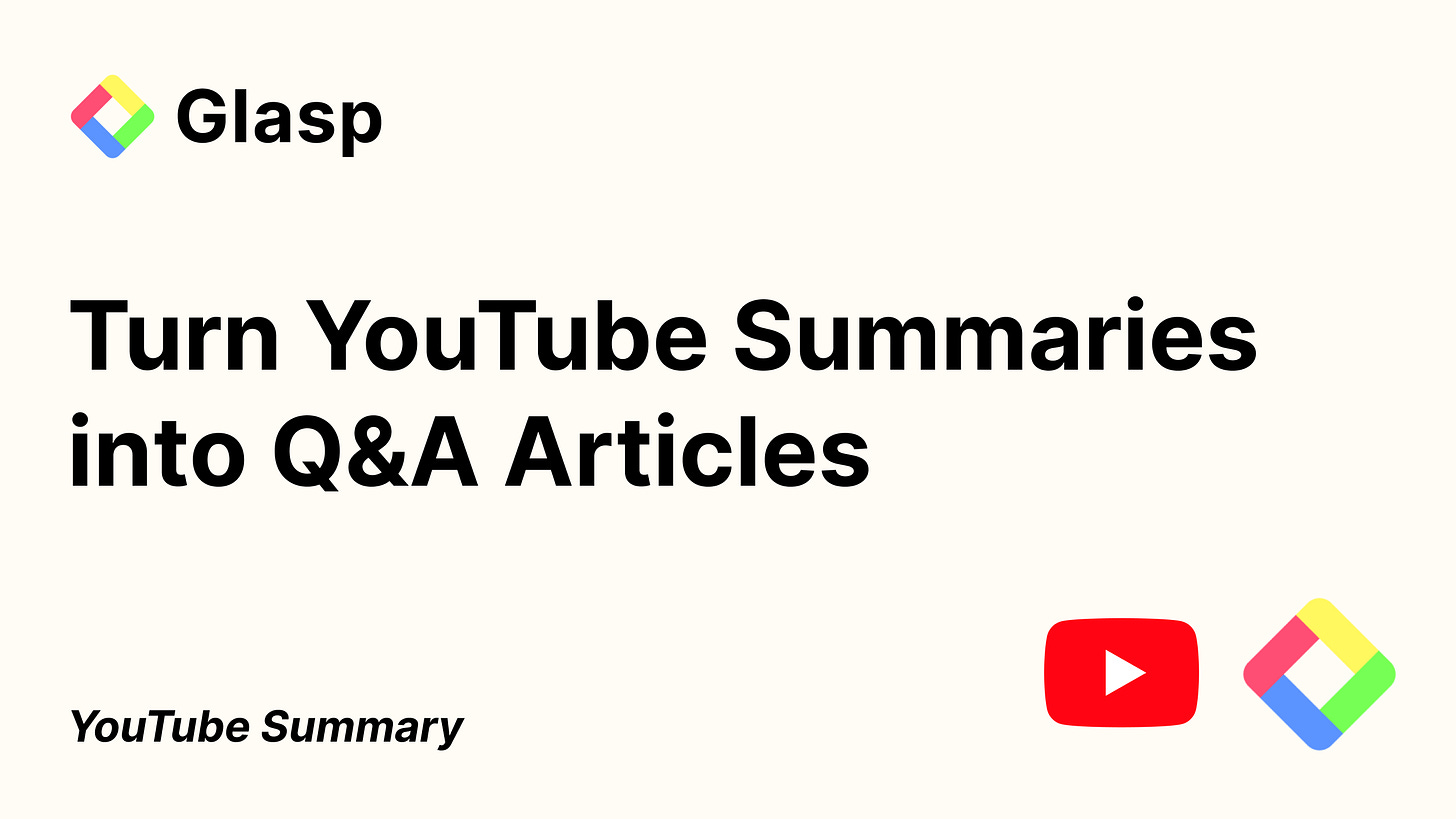
Thank you for reading!
We hope this episode is helpful, especially for early-stage founders aspiring to build a globally used product in the B2C space.
Let us know if you have any questions or comments, or if you have any topics/tactics you want us to share.
We received some questions and feedback via email. For further understanding and discussion, I paste the questions and our answers here.
"Are there any particular success stories or case studies from users who benefited most from your Q&A or SEO experiments?"
> We're not tracking if users' content/post is successfully surfaced or spread, but as long as we know, a lot of founders, executives, and marketers are using our YouTube Summary to make marketing/educational/tutorial/insightful articles, X post, LinkedIn post, newsletters, etc, so I think it works well.
One tip I can offer is to search for questions (or pain points) on Reddit or Google Search Engine, and then you can see what kinds of questions people ask in your domain. Then, you can search for videos or other content and create content to answer them. You can experiment with what works. Additionally, when writing a blog post, check the competition. Even if you write great content, it's so hard to rank in the top results if it's too competitive.
"Also, can you share any tips for those just starting out in programmatic SEO for educational content?"
> I think it's unnecessary to be programmatic SEO in the beginning. You can make small content, post it on social media or a blog site, then see metrics and responses. If it works and it needs to scale, you can start thinking of automating it.
Firstly, we tested making posts manually on Ghost. Then, checked Google Analytics and Search Console, and noticed the posts ranked in the search results, so we decided to automate it.
YouTube articles (https://blog.glasp.co/tag/youtube/)
Hope it helps. And good luck with it!